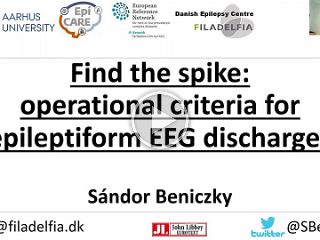Epileptic Disorders
MENUThe operational definition of epileptiform discharges significantly improves diagnostic accuracy and inter-rater agreement of trainees in EEG reading Volume 24, issue 2, April 2022
- Key words: diagnostic accuracy, definition, criteria, EEG, interictal epileptiform discharges, teaching
- DOI : 10.1684/epd.2021.1395
- Page(s) : 353-8
- Published in: 2022
Objective
To assess whether trainees can learn and implement the operational definition of interictal epileptiform discharges (IEDs) of the International Federation of Clinical Neurophysiology (IFCN), based on six morphological criteria, and whether its implementation improves their diagnostic performance and inter-rater agreement (IRA).
Methods
Seven trainees evaluated a balanced dataset of 70 EEG samples containing sharp transients (35 from patients with epilepsy and 35 from patients with non-epileptic paroxysmal events). The gold standard was derived from video-EEG recordings of the habitual clinical episodes. The trainees individually reviewed the EEGs, blinded to all other data, in two successive training sessions, three months apart. The second session was preceded by a teaching module about the IFCN criteria, and the trainees implemented them during the second reading session.
Results
By implementing the IFCN criteria, trainees significantly improved their specificity (94.29% vs. 77.14%; p=0.01) and overall accuracy (81.43% vs. 64.29%; p=0.01) for identifying IEDs. Sensitivity also improved but did not reach the level of statistical significance (77.14% vs. 60%; p=0.07). IRA improved significantly from fair (k=0.31; 95% CI: 0.22-0.40) to high-moderate (k=0.56; 95% CI:0.46-0.67) beyond-chance agreement.
Significance
Implementing the IFCN criteria significantly improves the diagnostic performance and IRA of trainees in identifying IEDs. Teaching the IFCN criteria for IEDs will increase specificity in clinical EEG and avoid over-reading, the most common cause of misdiagnosing epilepsy.



